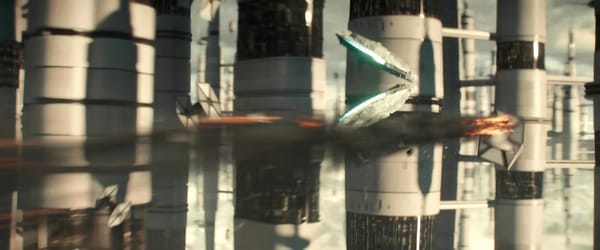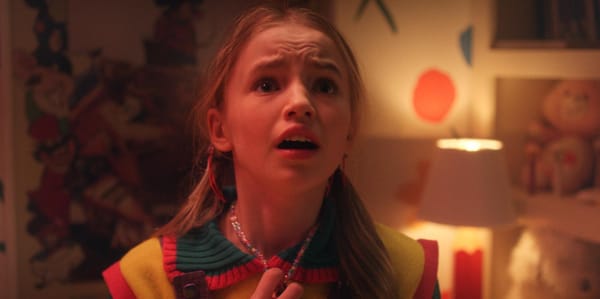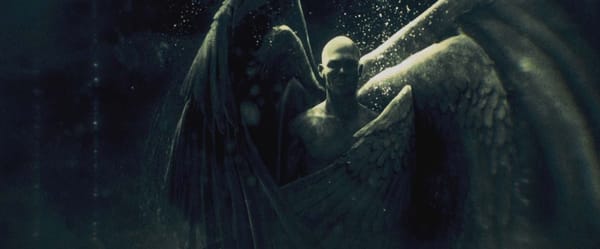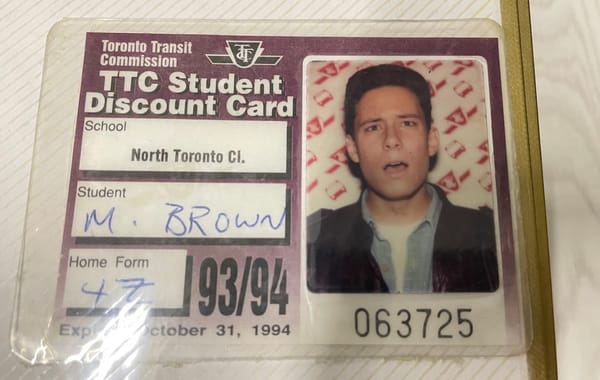A Disney+ family (of one)
The streaming wars are over and we've all picked our team
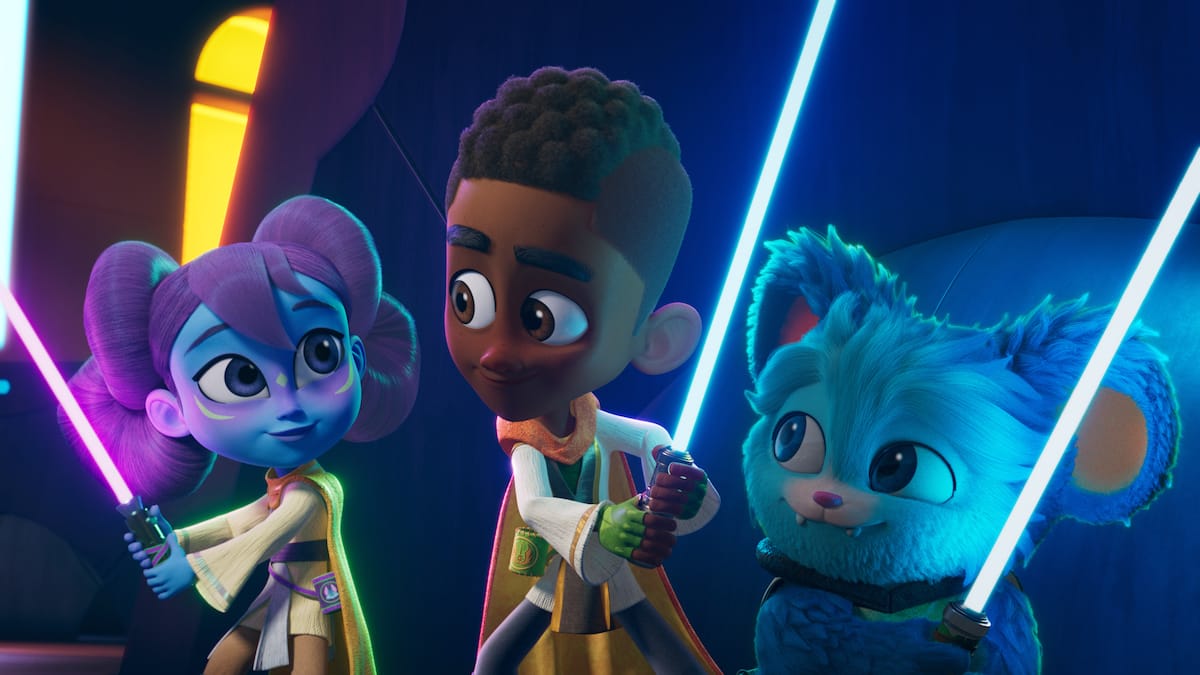
It wasn’t till I was reading Joe Adalian’s recent interview with Matthew Ball, on Disney+ securing its place in the post-wars streaming landscape, that I realized what a stable streaming marketplace actually looks like. It’s not dozens of platforms at $10/month; and it’s not the return of “bundling” (“it’s just like cable all over again!”), whatever that means.
No, the end-state of the streaming wars is: each household has a “root” platform — the one they kind of can’t operate the household without — and then dips in and out of others as needed (and afforded), in an elaborate pay-as-you-go model.
This, effectively, is why Netflix won the war before it even started: they were already that central tree-trunk, in most homes. Even now, almost a decade later, it’s probably next to impossible for most North American streaming consumers to imagine their life without, at least, Netflix. Anything else — i.e., all of Netflix’s competitors — is a nice-to-have by default. A hell of a strategic advantage! An advantage so strong, in fact, that weaning password-sharers out of their user base… worked! A lot of those people ended up ponying up, rather than lose their root platform.
The Adalian article nicely points out that expecting households to find lucre for eight other platforms simultaneously — all of which, he and Ball also point out, entered the war almost simultaneously, exacerbating the problem — was never plausible. (I happen to think the same issue exists with paid online journalism, which also expects consumers to either pick a single publication and stick with it, or pay out the nose for broad media coverage.)
In streaming, there was probably a decent taste-testing phase, especially during the pandemic, when everyone wanted nothing more than to make the awfulness go away by watching WandaVision and Yellowstone. But sooner or later, everybody started making their need-to-have vs. nice-to-have lists on digital platforms, and I’ll bet Netflix was at the top of better than 70% of the former. As of this summer, maybe, Disney+ might have firmly grabbed a big chunk of the remaining share, and that’s where the market’s going to sit for the foreseeable future.
The obvious use case for Disney+ (Adalian and Ball again) is families. There’s plenty of “babysitter” content on Netflix, but the dominant child-foreward brands in American culture (Marvel, Star Wars, and Pixar… especially Pixar) are on Disney. This makes me wonder a couple of things:
- Does this mean that part of the Disney strategic model would be to accept losses as those families age out — meaning that, as households see their children age into adolescence, Disney expects them to churn over to Netflix? Maybe there’s a smaller pipeline model for turning those kids into Disney Adults, but it wouldn’t be substantive. Good news though: we keep making more children all the time.
- Does this mean, with the streaming wars now over, Disney might start abandoning the field on adult-skewing exploitations of their core brands? I don’t mean ditching Hulu and all the superb television series that come with it; I mean, are the days of Andor and its ilk firmly behind us?
The latter, of course, is the what will happen to meeeee???? of it all. I did the math on my household’s main subscription at the end of the streaming wars, too, and came out as an edge case: a household with no children whose primary subscription is, and likely always will be, Disney+.
I used to quip that Disney+ could triple or quadruple its price and I’d stick with it. That’s probably not quite accurate — I’m a poor writer, after all — but they’ve doubled the subscription cost in the five years I’ve been a subscriber, and I’ve barely noticed, and certainly not complained. The amount of value I get out of that platform remains immense — and not just for the obvious value proposition for me personally, i.e. the Star Wars and Marvel of it all (without which, I am nothing). When you post up my two favourite brands alongside the past 30 years of Disney (and Pixar) animation, and all the aforementioned Hulu shows, and a deep bench of Disney, Fox, and other studios’ feature film content… well, forget it. I’ll never get to the bottom of the well. And they keep making more.
RIP, The Acolyte
Now, Disney may have me in perpetuity, but they sure made me sad this week. Deadline reported that The Acolyte won’t be moving forward as an ongoing series — hardly a surprise, but a disappointing outcome nonetheless. As with Netflix, the Great Streaming Correction has (I think) simply recalibrated what counts as a “success” on an expensive streaming-only television series. A $200M, 8-episode show needs to pull a hell of a lot of eyeballs in 2024, to be a worthwhile ongoing investment. Besides The Mandalorian, I don’t know if Disney+ has had any original series succeed at that scale, so I expect we’re going to see an internal struggle to find a cheaper model for this kind of entertainment, going forward — if one even exists. Star Wars and Marvel are expensive as hell to exploit in the TV space.
My overall theory on Star Wars (same as Marvel) is that the directive from Iger to the studio heads is clear: Disney bought a movie franchise, and it's time to put that movie franchise back on the big screen, dominating popular culture and feeding the other core Disney businesses (theme parks and merchandising).
Lucasfilm, even less so than Marvel, hasn’t exactly “demonstrated competence” (as we’d say in a performance evaluation) in their ability to deliver consistently in either the TV or movie space, so taking time out from one to focus on the other makes sense. I’d expect Star Wars to be a very big-screen-focused brand through the end of the decade, starting with The Mandalorian & Grogu in 2026. Notably, Star Wars: Galaxy’s Edge is about to receive its first major post-launch update… and it’s going to put Batuu firmly in its Mandalorian era.
On TV, Lucasfilm will deliver the shows they’ve already shot (Skeleton Crew and Andor) and mayyyyyybe let new Creative Head Honcho Dave Filoni do his second season of Ahsoka… although even there, I would not be wholly surprised to see the show end up on the pile of announced-but-never-made Star Wars projects. Again: Ahsoka is expensive to make, and its audience numbers matched The Acolyte. It would be a tough sell in any boardroom.
I bet animation will do fine, though, which is Filoni’s bread and butter anyway. Maybe Ahsoka 2 portals over to a Visions-style anime riff, and kicks off a wave of further animated content on Disney+, at which the brand has always excelled.
Links and nonsuch
- I don’t know why you’d want to follow me on TikTok, unless you’re really curious about which Star Trek character I want to fuck at any given time. Last summer, Jack Quaid. This summer, Maj’el. I realize both of these are (nominally) animated characters. (TikTok)
- Look man, there’s been a whole lotta internet fun to be had as the American Nazi party melts down… I liked this one a hell of a lot, though. Paragraph after paragraph, a delight for the senses. Some people are just great writers. (Defector)
- I read this after I wrote today’s post (and there’s not much overlap anyway), but the Entertainment Strategy Guy recently wrote a 7-point plan to save Hollywood. Unlike 98% of his newsletters, it’s free to read! (Substack)
- Since I’m relatively new to the newsletter space I’m not above doing a link-swap with your newsletter. Wanna?
- I started screwing around with low-fi YouTube content. This after creating a whopping total of two (2) video essays when I launched the channel, because the time demands (particularly on Rajo, my poor editor/producer) were too large. Let’s see if I can shoot and edit under-5 clips of me waxing rhapsodic about Star Wars toys for a while, and see if it holds. Please like and subscribe if you are my friend:

